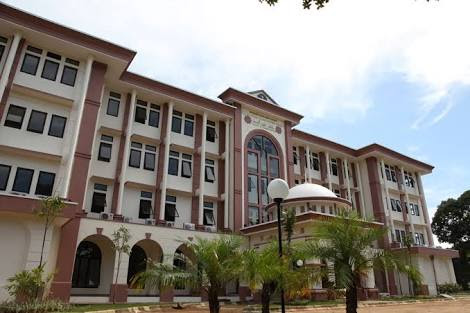STUDENTS’ THINKING PROCESS IN SOLVING MATHEMATICS PROBLEMS REVIEWING FROM COGNITIVE STYLE
PROSES BERPIKIR SISWA DALAM MENYELESAIKAN MASALAH MATEMATIKA DITINJAU DARI GAYA KOGNITIF
Abstract
This research aims to identify and describe the thinking process of students in solving mathematical problems, both students who have a field-independent type of cognitive style (GK-FI) and students who have a field-dependent type of cognitive style (GK-FD). The subjects of this study were eight people, consisting of four GK-FI students and four GK-FD students. Data was collected using the Group Embedded Figure Test (GEFT). The process of selecting subjects was carried out in stages (a) determining the class to be the subject of the study, (b) giving the GEFT test, (c) analyzing the results of the GEFT test, (d) determining the research subjects, each consisting of 4 students. The research process follows the stages: (a) reviewing theory and conducting an initial survey, (b) preparing research instruments, (c) collecting research data both written data and interview data, (d) validating data using triangulation techniques, (e) analyzing data on mathematical problems to get an overview of the procedures used by students in solving mathematical problems, and (f) revealing students' thinking processes in solving mathematical problems based on students' cognitive styles. The thinking processes of GK-FI and GK-FD subjects in solving mathematical problems are as follows: (1) In the process of forming an understanding, the GK-FI subject receives and parses based on its parts, then makes a problem-solving plan, while the GK-FD subject does not parse based on its parts. (2) In the process of forming opinions, the subject of GK-FI performs with an analytical process while the subject of GK-FD performs with a process of trial and error and matching. (3) In the process of drawing conclusions, the GK-FI subject conducts an examination or checks the results first, while the GK-FD subject does not do.
Downloads
References
Ahmadzade, L., & Shojae, M. (2013). Investigating the relationship between cognitive style (filed dependence/independence) and academic achievement in male and female students of behbahan islamic azad university. Journal of Life Science and Biomedicine, 3(3), 245–249.
Hidayat, A., Sa’dijah, C., & Sulandra, I. M. (2019). Proses berpikir siswa field dependent dalam menyelesaikan masalah geometri berdasarkan tahapan polya. Jurnal Pendidikan: Teori, Penelitian, Dan Pengembangan, 4(7), 923. https://doi.org/10.17977/jptpp.v4i7.12634.
Masfingatin, T. (2013). Proses berpikir siswa sekolah menengah pertama dalam memecahkan masalah matematika ditinjau dari adversity quotient. Jurnal Ilmiah Pendidikan Indonesia, 2(1), 1–8. https://doi.org/10.25273/jipm.v2i1.491.
Messick, S. (1984). The nature of cognitive styles: problems and promise in educational practice. Educational Psychologist, 19(2), 59–74. https://doi.org/10.1080/00461528409529283.
Mulbar, U., Rahman, A., & Ahmar, A. (2017). Analysis of the ability in mathematical problem-solving based on SOLO taxonomy and cognitive style. World Transactions on Engineering and Technology Education, 15(1). Retrieved from https://ssrn.com/abstract=2940939.
Santia, I. (2015). Representasi siswa SMA dalam memecahkan masalah matematika berdasarkan gaya kognitif. JIPM (Jurnal Ilmiah Pendidikan Matematika), 3(2), 365–381. https://doi.org/10.25273/jipm.v3i2.505.
Sasongko, D. F., & Siswoyo, T. Y. E. (2013). Kreativitas siswa dalam pengajuan soal matematika ditinjau dari gaya kognitif field-independent (Fi) dan field-dependent (Fd). MATHEdunesa, 2(1), 1–8. https://doi.org/10.26740/mathedunesa.v2n1.p%25p.
Strajhar, P., Schmid, Y., Liakoni, E., Dolder, P. C., Rentsch, K. M., Kratschmar, D. V., Odermatt, A., & Liechti, M. E. (2016). Acute effects of lysergic acid diethylamide on circulating steroid levels in healthy subjects. Nature Methods, 7(6). https://doi.org/10.1111/jne.12374.
Ulya, H. (2015). Hubungan gaya kognitif dengan kemampuan pemecahan masalah matematika siswa. Jurnal Konseling Gusjigang, 1(2). https://doi.org/10.24176/jkg.v1i2.410.
Waber, D. (1989). The biological boundaries of cognitive styles: a neuropsychological analysis. Cognitive Style and Cognitive Development, 11–35.
Widyastuti, R., Usodo, B., & Riyadi. (2013). Proses berpikir siswa SMP dalam menyelesaikan masalah matematika berdasarkan langkah- langkah polya ditinjau dari adversity quotient. Jurmal Pembelajaran Matematika, 1(3), 239–249. https://doi.org/10.24042/ajpm.v6i2.48.
Witkin, H. A., Moore, C. A., Goodenough, D. R., & Cox, P. W. (1977). Field-dependent and field-independent cognitive styles and their educational implications. Review of Educational Research, 47(1), 1–64. https://doi.org/10.3102/00346543047001001.
Witkin, Herman A. (1973). The role of cognitive style in academic performance and in teacher-student relations. ETS Research Bulletin Series, 1973(1), 1–58. https://doi.org/10.1002/j.2333-8504.1973.tb00450.x.
Yetik, S. S., Akyuz, H. I., & Keser, H. (2012). Preservice teachers’ perceptions about their problem solving skills in the scenario based blended learning environment. Turkish Online Journal of Distance Education, 13(2), 158–168. https://dergipark.org.tr/en/pub/tojde/issue/16900/176151.
Yuliana, R. (2022). Metakognisi dalam memecahkan masalah penerapan integral pada mata kuliah kalkulus ditinjau dari tipe perilaku disc. 11(1), 21–39. https://doi.org/10.22487/aksioma.v11i1.1903.
Copyright (c) 2022 Rahmi Yuliana M., Hartini

This work is licensed under a Creative Commons Attribution 4.0 International License.

